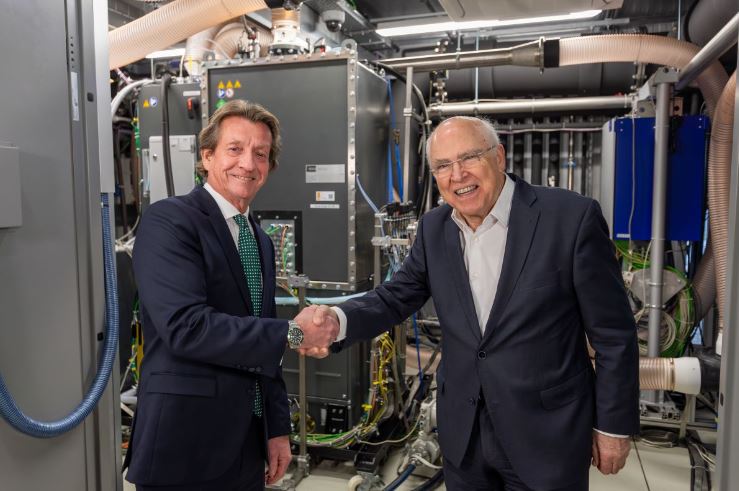TECO 2030 has successfully injected hydrogen into its 400 kW fuel cell system, marking a significant milestone in the deployment of hydrogen-powered marine vessels and heavy-duty equipment. The company aims to introduce the first operational system by the first half of 2024.
TECO 2030 achieved this milestone after months of rigorous testing and development. The FCM400 (Fuel Cell Module 400) was installed and tested on a bench in Graz, confirming the system’s ability to produce electricity from hydrogen. The successful injection of hydrogen into the fuel cell module serves as a crucial validation of the technology’s performance.
With the initial testing phase completed, the FCM400 is set to undergo further comprehensive testing to ensure its reliability and efficiency. TECO 2030 plans to deploy the hydrogen-fueled system for marine and heavy-duty applications during the first half of 2024.
TECO 2030 is actively involved in the manual production of FCM400 systems in collaboration with its technology development partner, AVL, located in Graz, Austria. The company intends to continue manual production at AVL for the next few units before transitioning the production process to Narvik, Norway, in the first half of 2024. The Narvik facility is poised to become a giga factory with a target production capacity of 4,000 units per year by 2030.
Tore Enger, Group CEO of TECO 2030, emphasized the environmental benefits of fuel cell technology. Operating a single FCM400 unit instead of a diesel generator can potentially save over 9,000 tons of CO2 emissions or the equivalent of consuming more than 3.5 million liters of diesel during 35,000 hours of operation. This achievement aligns with the company’s commitment to a more sustainable and environmentally friendly future.
The successful hydrogen injection into the fuel cell system positions TECO 2030 as a key player in advancing hydrogen propulsion for maritime and heavy-duty applications. The company’s strategic move to Narvik reflects its commitment to scaling up production and contributing to the global transition towards cleaner energy solutions.
